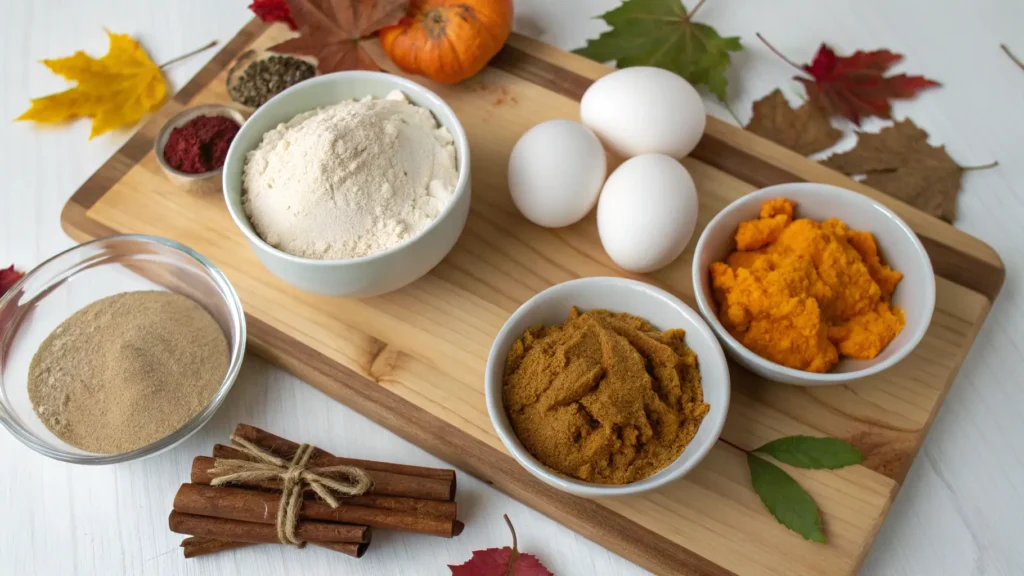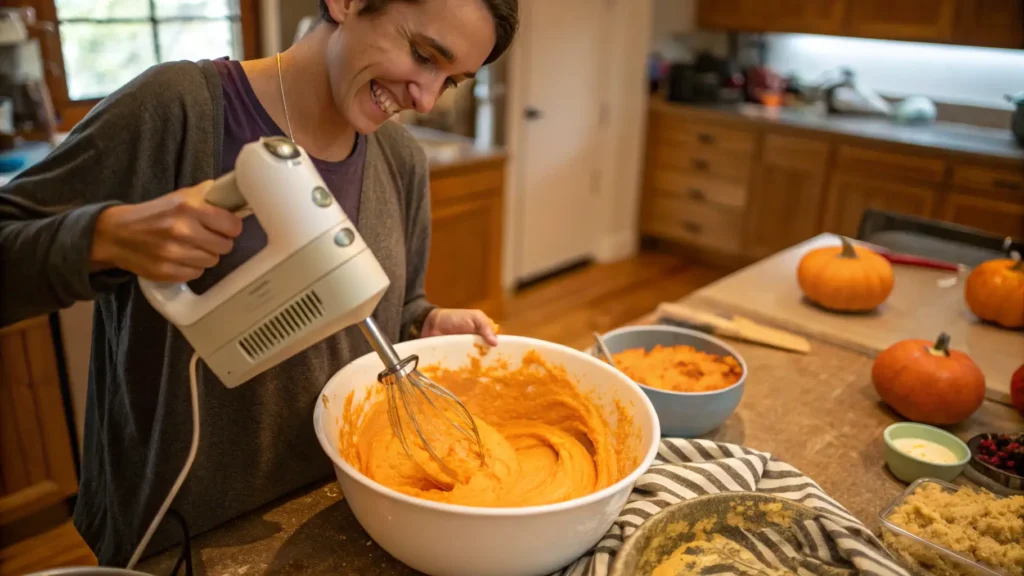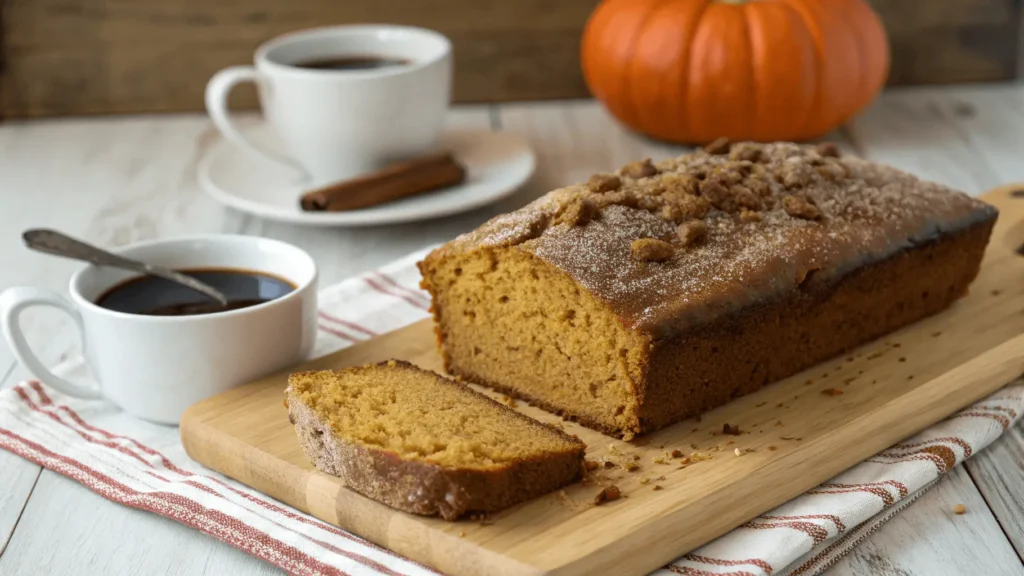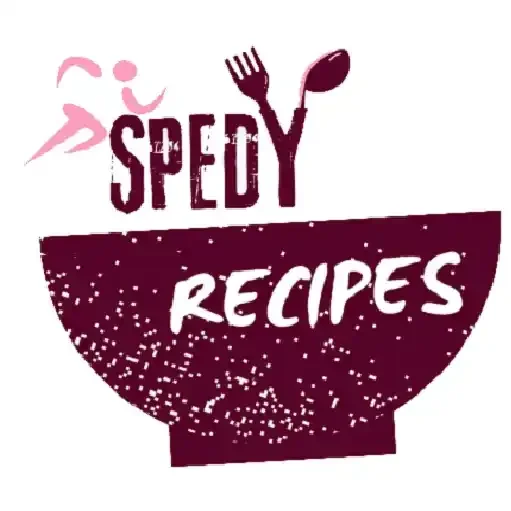Pumpkin bread is a fall favorite, but if you’re avoiding gluten, finding the perfect recipe can be a challenge. Whether you have celiac disease, gluten sensitivity, or just want a healthier alternative, gluten-free pumpkin bread can be just as moist, fluffy, and flavorful as traditional versions.
In this comprehensive guide, we’ll walk you through everything you need to know—from choosing the best ingredients to mastering the baking process. You’ll also learn about variations, storage tips, common baking mistakes, and even the health benefits of this delicious treat. Plus, we’ll answer frequently asked questions to make sure you bake the best gluten-free pumpkin bread every time.
Table of Contents
Introduction to Gluten-Free Pumpkin Bread
What Is Gluten-Free Pumpkin Bread?
Gluten-free pumpkin bread is a flavorful, moist, and slightly spiced quick bread made without wheat-based flour. Instead, it uses gluten-free alternatives like almond flour, oat flour, or a gluten-free all-purpose flour blend. It’s packed with warm fall spices like cinnamon, nutmeg, and cloves, giving it a cozy, comforting taste.
Unlike traditional pumpkin bread, this version caters to those with gluten intolerance while still offering a soft, fluffy texture. It pairs perfectly with coffee, tea, or even a dollop of dairy-free butter.
Why Choose Gluten-Free?
Going gluten-free isn’t just a trend—it’s a necessity for those with celiac disease or gluten sensitivity. Even if you don’t have a gluten intolerance, reducing gluten in your diet may improve digestion and reduce bloating. Plus, when made with nutrient-rich ingredients like almond flour or coconut sugar, gluten-free pumpkin bread can be a healthier alternative to its wheat-based counterpart.
Who Is This Recipe For?
- Celiac sufferers who must avoid gluten completely.
- People with gluten sensitivity looking for a tasty, safe alternative.
- Health-conscious bakers wanting a nutritious, homemade treat.
- Anyone who loves pumpkin spice and wants a delicious fall-inspired loaf!
I found a relevant internal linking opportunity from SpedyRecipes:
- You can reference How to Bake Perfect Gluten-Free Pumpkin Bread Every Time to provide readers with additional tips and tricks.
Ingredients for the Best Gluten-Free Pumpkin Bread

Choosing the Right Gluten-Free Flour Blend
The key to a perfect gluten-free pumpkin bread is the right flour blend. A high-quality gluten-free all-purpose flour with xanthan gum helps mimic the structure of regular wheat flour. Popular options include:
- Almond flour – Adds a slightly nutty taste and boosts protein.
- Oat flour – Gives a soft, slightly chewy texture.
- Coconut flour – Absorbs moisture, so use it in small amounts.
- Rice flour blends – Often used in store-bought gluten-free baking mixes.
For best results, use a 1:1 gluten-free flour mix that already contains xanthan gum. If yours doesn’t, add ½ teaspoon per cup of flour for better texture.
Pumpkin Purée: Canned vs. Fresh
Pumpkin purée is the heart of this recipe! Canned pumpkin works best because it has a consistent moisture level. If using fresh pumpkin, make sure to:
- Roast and blend it into a smooth purée.
- Strain excess liquid to avoid a soggy loaf.
Sweeteners: Sugar, Honey, or Maple Syrup?
You can customize your gluten-free pumpkin bread with different sweeteners:
- Brown sugar – Adds moisture and a deep, caramel-like flavor.
- Maple syrup or honey – Natural, refined sugar-free options.
- Coconut sugar – A lower glycemic index alternative.
Essential Spices for Authentic Pumpkin Flavor
The secret to a warm, comforting pumpkin bread? The right blend of spices! Use:
- Cinnamon – The classic warm spice.
- Nutmeg and cloves – Adds depth and richness.
- Pumpkin pie spice – A pre-mixed option with balanced flavors.
Step-by-Step Recipe for Moist Gluten-Free Pumpkin Bread

Prepping Your Ingredients and Tools
Before you start, make sure you have:
✅ A 9×5-inch loaf pan (lined with parchment paper)
✅ A mixing bowl for dry ingredients
✅ A whisk and spatula
✅ A preheated oven at 350°F (175°C)
Mixing the Dry and Wet Ingredients Separately
Keeping dry and wet ingredients separate helps with even mixing.
Dry Ingredients:
- 2 cups gluten-free flour blend
- 1 tsp baking soda
- ½ tsp baking powder
- ½ tsp xanthan gum (if not included in flour)
- ½ tsp salt
- 1½ tsp cinnamon
- ½ tsp nutmeg and cloves
Whisk these together for an even mix.
Wet Ingredients:
- 1 cup pumpkin purée
- ¾ cup brown sugar (or maple syrup)
- ½ cup melted coconut oil (or butter)
- 2 eggs (or flax eggs for vegan version)
- 1 tsp vanilla extract
Combining for the Perfect Texture
- Slowly add the wet mixture into the dry ingredients, stirring gently.
- Avoid overmixing! This keeps your gluten-free pumpkin bread light and fluffy.
- Pour the batter into your loaf pan and smooth the top.
Baking Tips for the Best Results
- Bake at 350°F (175°C) for 50-60 minutes.
- Test doneness by inserting a toothpick—it should come out with a few crumbs, not wet batter.
- Let the loaf cool in the pan for 10-15 minutes, then transfer to a wire rack.
Want even more baking tips? Check out this guide on How to Bake Perfect Gluten-Free Pumpkin Bread Every Time.
I didn’t find any highly relevant internal linking opportunities for gluten-free pumpkin bread on SpedyRecipes. However, if you’re interested in more delicious recipes, consider checking out The Hidden Secrets Behind Libby’s Gluten-Free Pumpkin You’ll Love for more pumpkin-related baking tips.
Variations and Add-Ins
One of the best things about gluten-free pumpkin bread is how easy it is to customize. Whether you’re looking for a healthier option, a dairy-free alternative, or just want to add some extra texture and flavor, there are plenty of ways to tweak the recipe.
Healthy Gluten-Free Pumpkin Bread (Low Sugar, High Protein Options)
Want to make your pumpkin bread even healthier? Try these swaps:
- Use almond flour – Adds protein and healthy fats.
- Swap sugar for maple syrup or honey – A more natural sweetener.
- Add Greek yogurt or mashed banana – Boosts moisture and reduces oil.
- Throw in some protein powder – For a post-workout snack.
Dairy-Free and Vegan Modifications
Making this bread dairy-free or vegan is simple.
- Replace eggs with flax eggs (1 tbsp flaxseed + 3 tbsp water = 1 egg).
- Use coconut oil or dairy-free butter instead of regular butter.
- Try almond or oat milk if the recipe calls for milk.
Add-Ins: Nuts, Chocolate Chips, or Streusel Topping
Want more texture? Try these mix-ins:
- Chopped pecans or walnuts – Adds crunch.
- Dark chocolate chips – For a richer, dessert-like taste.
- Dried cranberries or raisins – Adds natural sweetness.
- Cinnamon streusel topping – Mix ¼ cup brown sugar, 2 tbsp flour, and 1 tbsp melted butter for a crunchy top.
Experiment with different combinations to find your perfect loaf! Now, let’s talk about the best way to store and serve your delicious gluten-free pumpkin bread.
Storage and Serving Suggestions

Now that you’ve baked a delicious loaf of gluten-free pumpkin bread, how do you keep it fresh? Proper storage ensures that your bread stays moist and flavorful for as long as possible.
How to Store for Maximum Freshness
- Room temperature: Store in an airtight container for up to 3 days.
- Refrigerator: Keeps fresh for up to a week, but let it come to room temp before serving.
- Freezer: Wrap slices individually in plastic wrap and store in a freezer-safe bag for up to 3 months.
Freezing and Reheating Tips
- To thaw, let a slice sit at room temp for 20 minutes or microwave for 30 seconds.
- Warm it up in a toaster oven for a slightly crisp edge.
Serving Ideas: Toppings and Pairings
Gluten-free pumpkin bread is already delicious on its own, but you can make it even better with these pairings:
- A smear of almond or peanut butter for added protein.
- A drizzle of maple syrup or honey for extra sweetness.
- A side of Greek yogurt and fresh berries for a balanced breakfast.
- A cup of spiced chai or pumpkin spice latte to complement the flavors.
Common Mistakes and How to Fix Them
Baking gluten-free pumpkin bread isn’t tricky, but small mistakes can lead to a dry, gummy, or dense loaf. Let’s go over the most common problems and how to fix them.
Why Did My Bread Turn Out Dry or Gummy?
Getting the right texture is key, but sometimes, your pumpkin bread may not turn out as expected.
- Dry bread? You may have used too much flour. Gluten-free flours absorb more moisture, so always measure using the spoon-and-level method. Also, ensure you have enough liquid—pumpkin purée, eggs, or dairy-free milk help maintain moisture.
- Gummy texture? Overmixing is usually the culprit. Stir the batter just until combined. Also, check if your oven is properly preheated, as uneven baking can lead to gumminess.
How to Prevent Sinking in the Middle
Few things are more disappointing than cutting into your loaf only to find a sunken center.
- Use fresh baking powder and baking soda. Old leavening agents won’t help your bread rise properly.
- Don’t open the oven door too soon! Sudden temperature changes can cause the middle to collapse. Wait until the last 10 minutes of baking before checking.
- Make sure your batter isn’t too wet. If your pumpkin purée is watery, strain it first to remove excess moisture.
Getting the Right Balance of Moisture and Density
A perfect gluten-free pumpkin bread should be moist yet firm. To achieve this:
- Use a blend of gluten-free flours instead of just one.
- Stick to the correct ratio of wet to dry ingredients.
- Let the batter rest for 10 minutes before baking—this allows the flour to absorb moisture evenly.
By avoiding these common mistakes, you’ll get a perfectly baked loaf every time!
Nutritional Information and Health Benefits
Gluten-free pumpkin bread isn’t just delicious—it can also be a healthy alternative to regular pumpkin bread, depending on the ingredients used. Let’s break down its nutritional value and benefits.
Calories and Macros in Gluten-Free Pumpkin Bread
The exact calorie count depends on the ingredients, but a typical slice of gluten-free pumpkin bread contains:
- 180–220 calories
- 5–7g of fat (mostly from coconut oil, butter, or nuts)
- 30–35g of carbs
- 3–5g of protein
If you want to cut calories, swap sugar for maple syrup or honey and use applesauce instead of oil. Adding chia seeds or protein powder can increase the protein content.
Is It Healthier Than Traditional Pumpkin Bread?
Yes! Gluten-free pumpkin bread can be just as healthy, if not healthier, than traditional wheat-based versions. Here’s why:
- More fiber – Many gluten-free flours (like almond or oat flour) have higher fiber content than refined wheat flour.
- Less sugar – Most gluten-free recipes use natural sweeteners, reducing the need for refined sugar.
- Easier digestion – People with gluten sensitivity or celiac disease will find it much gentler on their stomach.
Best Ways to Make It Even Healthier
- Use coconut sugar or stevia instead of white sugar.
- Add ground flaxseeds or chia seeds for extra fiber and omega-3s.
- Swap butter for Greek yogurt or mashed banana to cut down on fat.
By making small tweaks, you can turn this fall favorite into a nutrient-packed treat that you can enjoy guilt-free!
Frequently Asked Questions (PAA)
Many people have questions about making gluten-free pumpkin bread, from getting the perfect texture to making it healthier. Here are some of the most common questions and answers!
1. What is the best gluten-free pumpkin bread recipe?
The best recipe depends on your preference, but a great gluten-free pumpkin bread should be moist, fluffy, and full of warm spices. A good recipe includes pumpkin purée, a gluten-free flour blend, eggs (or flax eggs), baking soda, and spices like cinnamon and nutmeg. For extra flavor, try adding vanilla extract and maple syrup.
2. How do you make gluten-free pumpkin bread moist?
Moisture is key! To ensure your loaf stays soft and tender:
- Use pumpkin purée, not pumpkin pie filling (which has added sugar and thickeners).
- Add healthy fats like coconut oil or melted butter.
- Don’t overmix the batter—this prevents a dense or gummy texture.
- Let it rest before slicing so the flavors can settle.
3. Is gluten-free pumpkin bread healthier than regular pumpkin bread?
Yes, it can be! Many gluten-free pumpkin bread recipes use healthier flours like almond or oat flour, which add fiber and nutrients. Plus, many gluten-free versions have less sugar and no refined wheat, making them easier to digest.
4. How many calories are in gluten-free pumpkin bread?
A typical slice contains 180–220 calories, depending on the ingredients. If you want a lower-calorie version, try using applesauce instead of oil and reducing sugar.
Now that we’ve covered all the essential tips and FAQs, let’s wrap up with a final takeaway.
Gluten-Free Pumpkin Bread
Equipment
- 9×5-inch loaf pan
- Mixing bowl
- Whisk
- Spatula
- Oven
Ingredients
Dry Ingredients
- 2 cups gluten-free flour blend Use 1:1 blend with xanthan gum
- 1 tsp baking soda
- 0.5 tsp baking powder
- 0.5 tsp xanthan gum Skip if your flour blend contains it
- 0.5 tsp salt
- 1.5 tsp cinnamon
- 0.5 tsp nutmeg
- 0.5 tsp cloves
Wet Ingredients
- 1 cup pumpkin purée Use canned or homemade
- 0.75 cup brown sugar Or use maple syrup for natural sweetness
- 0.5 cup melted coconut oil Or use butter
- 2 eggs Use flax eggs for a vegan version
- 1 tsp vanilla extract
Instructions
- Preheat your oven to 350°F (175°C). Line a 9×5-inch loaf pan with parchment paper.
- In a large mixing bowl, whisk together the dry ingredients: gluten-free flour blend, baking soda, baking powder, xanthan gum (if using), salt, cinnamon, nutmeg, and cloves.
- In another bowl, mix the wet ingredients: pumpkin purée, brown sugar (or maple syrup), melted coconut oil, eggs (or flax eggs), and vanilla extract.
- Gradually add the wet mixture into the dry ingredients, stirring gently until just combined. Do not overmix.
- Pour the batter into the prepared loaf pan and smooth the top.
- Bake for 50-60 minutes, or until a toothpick inserted in the center comes out with a few crumbs.
- Let the bread cool in the pan for 10-15 minutes before transferring it to a wire rack to cool completely.
Notes
Conclusion and Final Thoughts
Baking the perfect gluten-free pumpkin bread is easier than you think! With the right ingredients, techniques, and a little creativity, you can enjoy a moist, flavorful loaf that’s just as good—if not better—than traditional pumpkin bread.
Key Takeaways
- Always use high-quality gluten-free flour blends for the best texture.
- Measure ingredients carefully to avoid a dry or gummy loaf.
- Customize your bread with healthy swaps, add-ins, or dairy-free alternatives.
- Store it properly to keep it fresh, whether at room temperature, in the fridge, or the freezer.
Whether you’re making this bread for a gluten-free diet, a healthier treat, or just because you love pumpkin, this recipe is a winner. Plus, you can get creative with mix-ins like chocolate chips, nuts, or dried fruit to make it your own.
So, what are you waiting for? Preheat your oven, grab your ingredients, and start baking the best gluten-free pumpkin bread ever! 🍞🎃
Would you like a printable version of the recipe or a meal plan idea that includes this delicious bread? 😊

